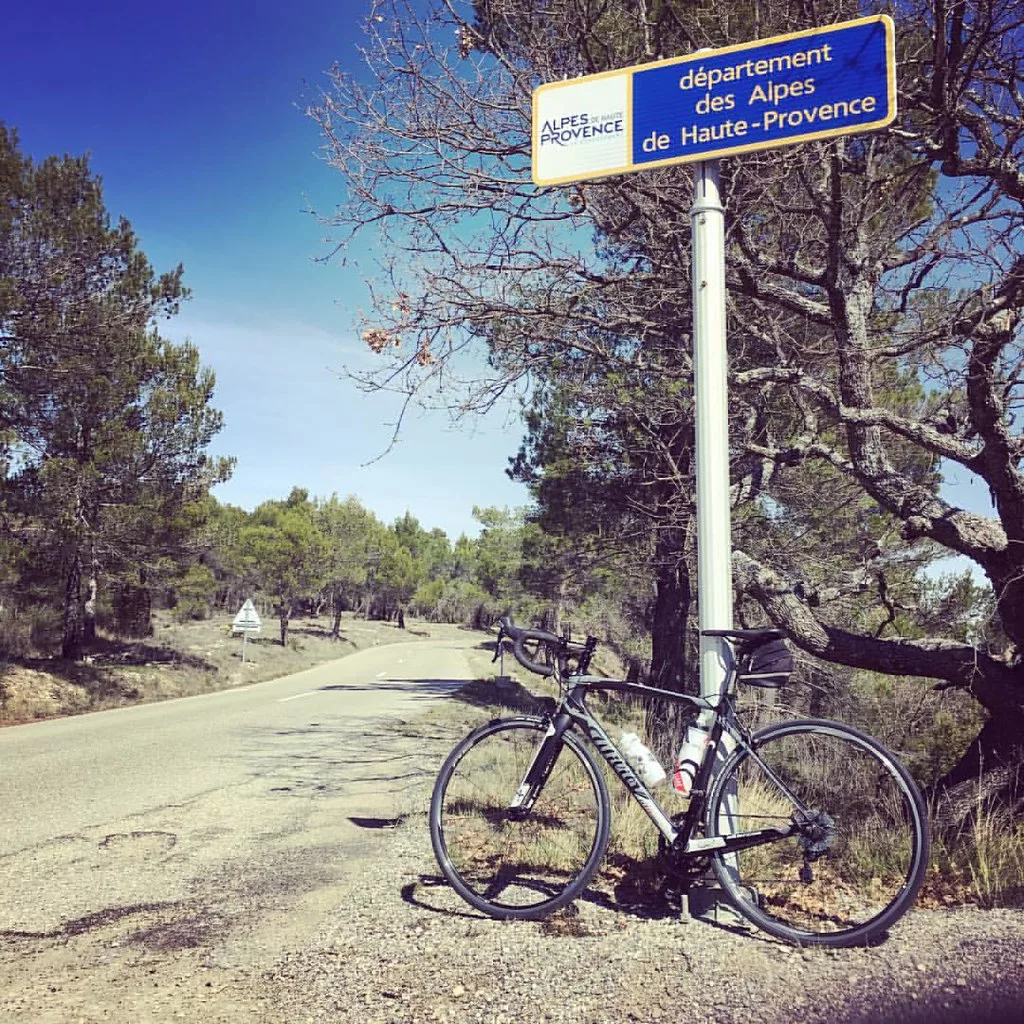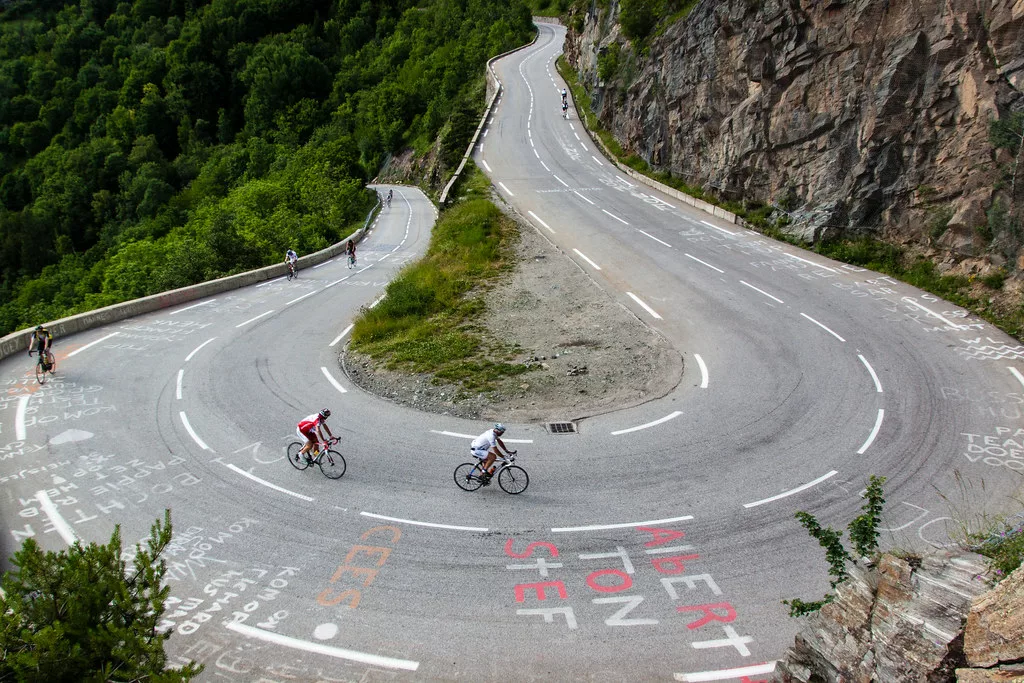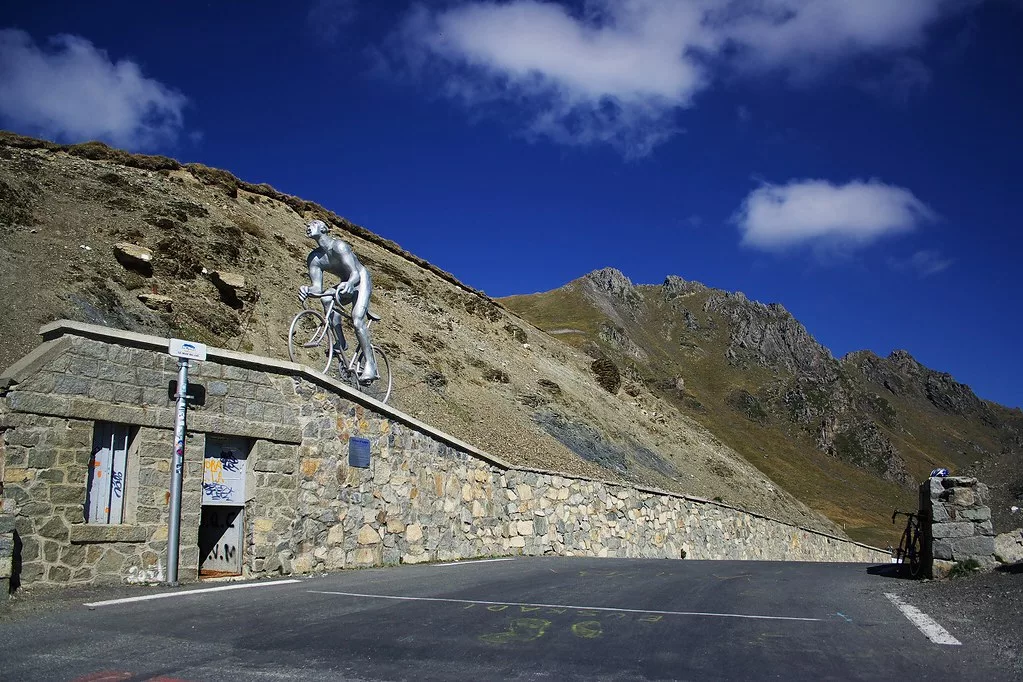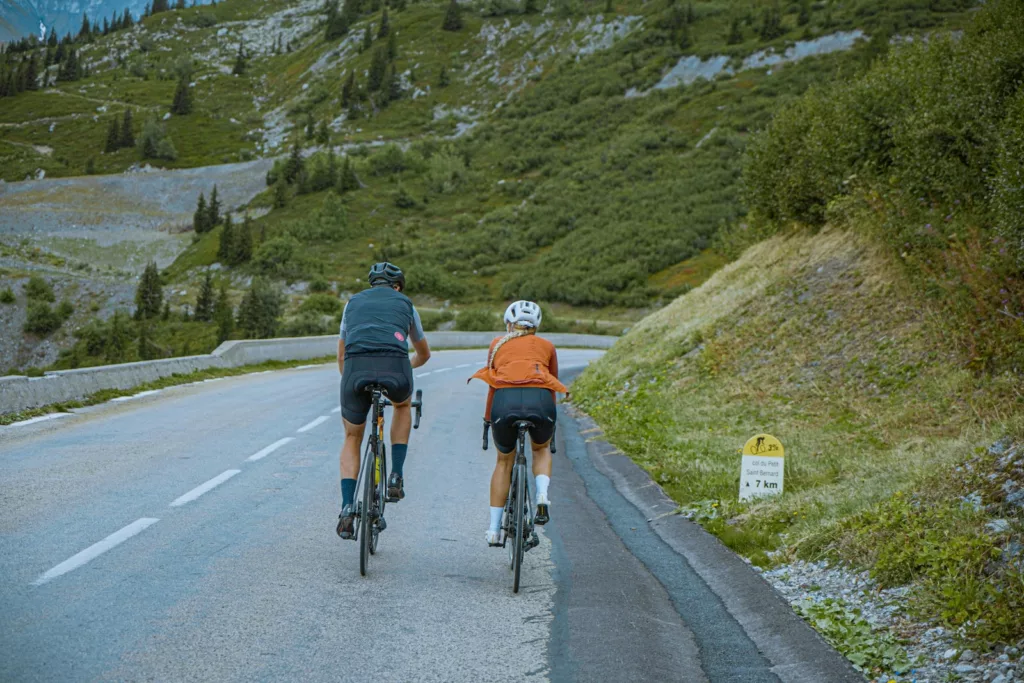Cycling in the Alps is a dream for many riders, offering challenging climbs, breathtaking scenery, and an unforgettable experience. This article aims to answer the top questions about cycling in this iconic mountain range. We’ll cover essential topics such as the best times to go, the must-ride routes, preparation tips, and what gear you should bring. Whether you’re planning your first alpine adventure or looking to improve your next trip, this guide will provide valuable insights to help you make the most out of cycling in the majestic Alps.
Table of Contents
Toggle1. What is the best time of year to cycle in the Alps?
The best time to cycle in the Alps largely depends on the weather conditions and personal preference. Generally, the summer months from June to September are considered ideal for cycling. This is when the weather is warm and the roads are clear of snow. However, the exact timing may vary based on the specific regions within the Alps.
During the summer, the temperature can range from 15°C to 30°C, making it comfortable for cycling. The visibility is also excellent during this period, allowing cyclists to enjoy the stunning Alpine scenery fully. However, it’s important to note that summer is also the busiest time for tourism in the Alps. Therefore, cyclists may have to share the roads with more vehicles and other cyclists.
The shoulder seasons, spring (April and May) and autumn (October and November), can also be good times for cycling. These periods are less crowded, and the weather is generally mild, although there can be more unpredictability with rain and cooler temperatures.
Winter cycling in the Alps is usually not recommended due to the cold temperatures, snow, and shorter daylight hours. However, some hardy cyclists do enjoy the challenge of winter cycling. It’s crucial to be well-prepared with the right gear and knowledge of the weather conditions if you choose to cycle during this time.

2. What are the must-ride routes in the Alps?
The Alps offer many cycling routes, each with unique characteristics and challenges. Here are some of the must-ride routes:
- Alpe d’Huez: Known for its 21 hairpin bends and an average gradient of 8.1%, this is one of the most famous climbs in the world of cycling. The 13.8-kilometre climb is a regular feature in the Tour de France.
- Col du Galibier: This is one of the highest mountain passes in the Alps, reaching an altitude of 2,645 metres. The climb is challenging but offers stunning views.
- Passo dello Stelvio: Located on the Italian side of the Alps, this pass reaches an altitude of 2,758 metres, making it one of the highest paved roads in Europe. The route features 48 hairpin turns and is a real test of endurance.
- Col de la Bonette: This route takes you to the highest paved road in France at 2,802 metres. The climb is long and steady, with an average gradient of 6.7%.
- Col du Tourmalet: One of the most iconic climbs in the Tour de France and Tour de France Femmes, this route reaches an altitude of 2,115 metres. The climb is challenging, with an average gradient of 7.4%.
3. What equipment do I need for cycling in the Alps?
Cycling in the Alps requires specific equipment due to the challenging terrain and variable weather conditions. Here is a list of essential equipment:
- Bicycle: A road bike with a good range of gears is recommended for the steep Alpine climbs. Ensure your bike is in good working order before you set off.
- Helmet: A well-fitted helmet is a must for safety.
- Clothing: Dress in layers to adapt to changing weather conditions. Include a waterproof jacket, cycling shorts, a long-sleeve jersey, and thermal layers for cooler temperatures.
- Shoes: Choose comfortable cycling shoes with good grip.
- Accessories: Sunglasses for protection against sun and wind, gloves for grip and warmth, and a cycling cap for under your helmet.
- Repair kit: Include a spare tube, tyre levers, patch kit, mini pump, and a multi-tool.
- Nutrition and hydration: High-energy snacks and plenty of water are essential for long rides.
4. How do I prepare for the physical challenge of cycling in the Alps?
Preparing for the physical demands of cycling in the Alps is crucial for a successful and enjoyable experience. In this section of the article, we’ll focus on key strategies to get your body ready for the rigours of alpine cycling. We’ll explore effective training techniques, essential nutrition tips, and ways to build both endurance and strength. Whether you’re eyeing a challenging climb or planning a scenic tour, these preparation tips will help you tackle the unique demands of cycling in the high altitudes and varied terrains of the Alps with confidence and resilience. Here are some tips to prepare:
- Start training several months in advance. Include both endurance and high-intensity interval training in your routine.
- Practice hill climbs. If you don’t live near any hills, use the incline setting on a stationary bike.
- Work on your cycling technique, improving your pedalling efficiency and gear-shifting skills.
- Build up your core strength. A strong core helps maintain a good cycling posture, reducing the risk of fatigue and injury.
- Consider hiring a cycling coach or joining a cycling club for structured training and support.
- Make sure you are well-rested and well-nourished before your cycling trip. A balanced diet, adequate hydration, and good sleep are crucial for physical fitness.

5. How do I handle the high altitudes in the Alps?
Cycling at high altitudes in the Alps can be challenging due to the thinner air and lower oxygen levels. Here are some tips to handle high altitudes:
- Acclimatise: Spend a few days at a high altitude before cycling to allow your body to adjust to the lower oxygen levels.
- Pace yourself: Cycle at a slower pace than you would at sea level to prevent exhaustion.
- Stay hydrated: The air is drier at high altitudes, which can lead to dehydration. Drink plenty of water and avoid alcohol.
- Eat well: Your body burns more calories at high altitudes. Eat high-energy foods and avoid heavy meals that can slow you down.
- Listen to your body: If you feel unwell, stop cycling and rest. Symptoms of altitude sickness include headache, nausea, dizziness, and shortness of breath.
6. What safety precautions should I take when cycling in the Alps?
Prioritising safety is absolutely essential when embarking on a cycling adventure in the Alps, where conditions can be unpredictable and challenging. Before you begin your journey, it’s crucial to check the weather forecast. The weather in the Alps can change rapidly, and being caught in severe conditions can be dangerous. Avoid cycling in extreme weather to ensure your safety. Planning your route meticulously in advance is equally important. Understanding the difficulty level and the overall length of the route helps in preparing mentally and physically, preventing you from getting into situations beyond your skill level. Wearing a helmet, along with appropriate protective gear such as knee pads and elbow guards, is a must to protect yourself from potential injuries.
Ensuring that your bike is in prime condition is another critical safety step. A thorough check of the brakes, tyres, and gears will help prevent mechanical failures that could lead to accidents. In addition to this, carrying a first aid kit is a wise decision, and being familiar with basic first aid techniques can be crucial in managing minor injuries until professional help is available. It’s also prudent to inform a friend or family member about your planned route and expected time of return. This information can be vital in emergency situations where you might need assistance. Carrying a mobile phone is highly recommended for emergencies; however, it’s important to remember that in the remote areas of the Alps, cellular reception can be unreliable.
As an additional precaution, consider carrying an emergency whistle or a GPS device, especially when venturing into less-travelled paths. These devices can be lifesavers in situations where you have no mobile reception. Furthermore, it’s advisable to carry enough water and snacks, as physical exertion at high altitudes can be taxing, and staying hydrated and energised is key to maintaining your strength and focus. Lastly, understanding and respecting local traffic laws and cycling regulations in the Alps will not only keep you safe but also contribute to a harmonious coexistence with other road users and the environment.
7. Can I hire a bike in the Alps?
Indeed, the Alps region of France is well-equipped with numerous bike hire services, catering to the diverse needs of cyclists. Whether you’re seeking a road bike for climbing the famous cols or a mountain bike for exploring rugged trails, these services offer a wide range of options.
For example, in the heart of the French Alps, you can find bike hire services such as “Alps Bike Hire” located in Morzine, known for its extensive selection of high-quality road and mountain bikes. Another popular option is “Bike Village” in Les Arcs, which offers not only bike rentals but also guided tours around the scenic alpine routes.
In the picturesque town of Annecy, “Cyclable Annecy” provides an array of bikes perfect for cruising around the lake or tackling nearby mountain passes. For those venturing into the Chamonix valley, “Legend CHX” in Chamonix is a go-to for top-notch mountain and electric bikes, ideal for both challenging ascents and leisurely explorations.
When visiting these shops, it’s essential to discuss your cycling plans with the staff, as they can recommend the best type of bike and adjust it to fit your size and skill level. Additionally, many of these services offer helmets, locks, and even cycling gear, ensuring you have everything you need for a safe and enjoyable ride in the stunning Alps.

8. Can I take part in a cycling tour in the Alps?
Participating in a cycling tour in the Alps is a fantastic way to experience this iconic region. Numerous companies offer organised tours that cater to various skill levels and interests. These tours typically include guided routes, accommodation, meals, and often support vehicles and luggage transfers.
For example, “Alpine Cols” specialises in road cycling tours that tackle some of the most famous climbs in the Alps, perfect for those looking to follow in the footsteps of the Tour de France. “Marmot Tours” offers a range of options, from leisurely rides through picturesque landscapes to more challenging routes for seasoned cyclists.
Another great choice is “Ride & Seek”, which provides historical cycling adventures in the Alps, combining scenic rides with cultural experiences. For mountain biking enthusiasts, “TrailAddiction” in Les Arcs offers tours that explore off-road trails with breathtaking views.
These tours not only allow you to fully immerse yourself in the stunning Alpine scenery but also give you the chance to connect with fellow cycling enthusiasts and learn from knowledgeable guides. Whether you’re a beginner or a veteran cyclist, these tours offer a memorable way to explore the Alps on two wheels.
9. How can I protect the environment while cycling in the Alps?
As cyclists explore the breathtaking Alps, it’s crucial to adopt practices that safeguard the environment and honour the pristine beauty of the region. To minimise your ecological impact, consider the following tips:
- Always stick to the designated cycling routes. Venturing off these paths can disturb local wildlife and lead to the destruction of delicate vegetation.
- Avoid littering at all costs. Carry any trash with you until you find an appropriate place to dispose of it responsibly.
- Opt for refillable water bottles over single-use plastics. This simple switch significantly reduces plastic waste.
- Show respect for local communities. This includes understanding and adhering to their customs and traditions.
- If you choose to wild camp, ensure you leave no trace. Select camping spots away from water sources and trails. Avoid lighting fires and be sure to carry out all your rubbish.
- Think about your travel options to the Alps. Using trains or car-sharing methods can significantly lower your carbon footprint compared to flying.
- Be mindful of noise pollution, especially in quiet natural areas. This helps preserve the tranquil environment and doesn’t disturb the wildlife.
- Support local businesses and sustainable tourism practices. Buying local products and using eco-friendly services contribute positively to the community.
- Be considerate of other trail users. Share the paths respectfully with hikers, other cyclists, and any animals you might encounter.
- Lastly, educate yourself about the area’s environmental challenges and regulations. This knowledge can guide you to make more informed, eco-friendly choices during your cycling adventures.
Embracing these practices ensures that we, as cyclists, not only enjoy the majestic beauty of the Alps but also contribute to its preservation for future generations to experience and cherish.






